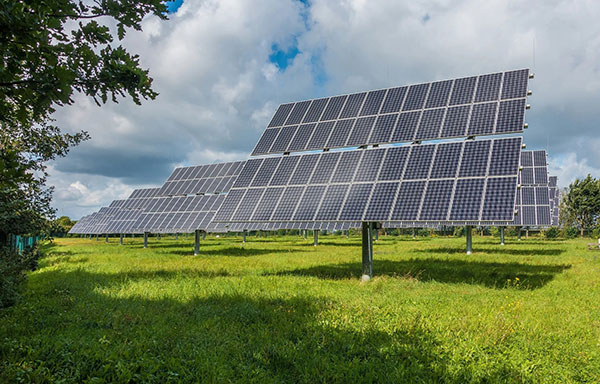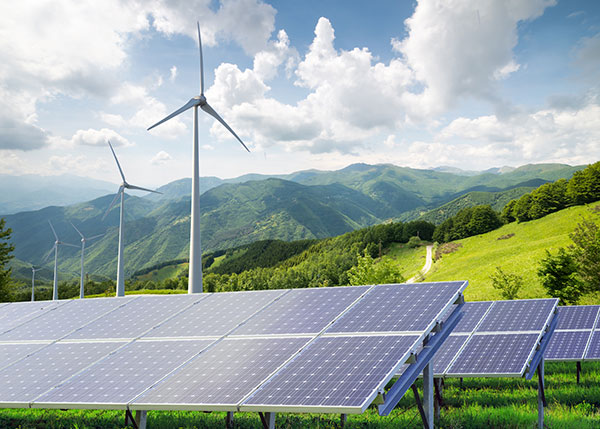Solar Energy Increasing Popularity and Environmental Dilemma
As the world is trying to introduce more
renewable energy sources,
solar power remains one of the most rapidly embraced solutions. According to the International Energy Agency,
solar energy has become the fastest-growing power source and has been installed in over 627 gigawatts worldwide by the end of 2022. That being said, thus rapid expansion raises a particular environmental dilemma: although solar energy is deemed green,
solar panels’ production is highly energy-consuming and hazardous, and their recyclability is low.

A Booming Industry and Its Impact on the Environment
Indeed, renewable energy sources are a priority for most developed and developing countries, and there would be a sharp rise in their adoption within the next few decades. Technically, a
photovoltaic or
PV cell is the chief technology within a
solar panel. When producing these cells, the electricity sector uses mainly highly purified silicon. The latter is obtained by heating quartz rock in a furnace and enriching products with coal and foreign energy sources. This process emits
sulfur hexafluoride – a greenhouse gas that has a GWP of 30,000. Finally, the operational life of solar panels is no longer than 30 years, which means they turn into waste and currently pose the vastest disposal challenge. . It is estimated that
by 2050, waste from solar panels will amount to 78 million tonnes a year. To address this issue, the world must focus on creating
non-toxic waste treatments and recycling methods to salvage precious materials like silver and silicon from the panels.
The Complexity of Manufacturing and Transparency Issues
The manufacturing process for solar panels is complex and energy-intensive, involving the extraction, purification, and processing of raw materials. This complexity is further complicated by transparency concerns along the chain, particularly material sourcing. For instance,
polysilicon, which is the key material used in most solar panels, has been ethically and environmentally controversial. Meanwhile, the situation is exacerbated by the same critical raw-material concern as above: the solar industry is overly reliant on too gartnered for the critical raw materials manufacturers, which puts projects at risk from supply chain disruptions and price fluctuations. There are complications with transparency in the industry in terms of supply chain ethics and sustainability. The sector has begun battling this by enhancing traceability and ethical practice options, such as the
Solar Supply Chain Traceability Protocol, which aims to shed greater light on the material origins used in solar products. Meanwhile, there are efforts to
standardize sustainability options in the production of solar energy.

Efforts towards Standardizing Sustainability
Organizations like the
Solar Energy Industries Association and the
International Renewable Energy Agency (IRENA) help to create standards and issue certificates for sustainable and environmentally conscious materials and technology processes in the manufacturing, installation, maintenance, and disposal of solar panels. For this purpose, the
SEIA has established the
Solar Panel Recycling Program. Meanwhile, new technological developments, all directed at enhancing sustainability, like thin-film PV cells that require less material and manufacturing energy GPIO to produce and are significantly more efficient than traditional models.
Solar energy is an ever-growing part of our global renewable future. The trajectory of its growth is a testament to its ability to play a significant role in our transition to renewable energy. Although its rapid expansion has been marked by environmental paradoxes that can hardly be deemed solved yet, the current trend in the industry can lead towards an overall increase in sustainability and transparency, which should mitigate these issues. Additionally, as the technology becomes more advanced, it is bound to improve, turning solar into an essential part of the world’s energy future with promises of
cleaner, more sustainable power for the generations to follow.
The Mining and Production Quandary in Solar Panel Creation
Solar cells are frequently viewed as the embodiment of renewable energy, helping the civilized world’s power needs to become greener. However, the production of photovoltaic PV panels is mired in a number of problematic aspects of raw material extraction and the energy-intensive manufacturing process. The most common material found in solar cells is silicon, purification of which requires a
high-energy, high-temperature process that paradoxically depends on fossil fuels. Elevated demand for the production of solar panels places an extra burden on the mining industry of countries like China, the United States, Brazil, where a substantial fraction of the world’s quartz is mined for silicon. The extraction of these materials is both incredibly energy-consuming and leaves a considerable environmental footprint, raising concerns about the
actual “greenness” of solar energy.
Solar panels are popular renewable energy sources, but the
energy burden in the production is high.
Moreover, energy is consumed heavily at almost every step of the way from raw material production to the final product. For example, the process begins with mining to extract quartz, an essential mineral in the production of solar panels. At the same time, valuable metals, such as silver and aluminum, are also extracted. Nevertheless, this degree of machinery results in significant damage to the landscape in the extraction of highly efficient quarries. In fact, this is the sugar in the desired goal: the extraction of minerals requires the use of electricity. The melting of silicon in the production process is carried out at temperatures above 2000 degrees, and the mine uses electricity to transform the raw products mined through the purification process. Technical advances are being made to make all these processes more energy-efficient and to develop alternative materials that use less but not replace electricity.
One of the main transportation routes is precisely one of the greenest resources – solar energy, and transportation emissions do not meet their mission. According to analysts, one of the priorities is the construction of a manufacturing process in relation to markets. In other words, companies should build factories in China to offer more panels than Europe or install them near the European market. In addition, innovations in environmentally friendly transportation also make the supply cycle profitable. In contrast, they must subsequently drive forward a more targeted energy carrier substitution and energy track. Not only is the production of solar energy energy-intensive, but it is dangerous due to the manufacture of the latter. In fact, making high quality wafers from silicon includes dangerous chemicals such as hydrofluoric acid and sodium hydroxide. While they are necessary to clean the silicon wafers, they are also hazardous to humans and the environment. The severity of these risks has led developers to develop alternatives to hazardous chemicals and improve workplace safety standards.
References
How solar panels affect the environment. The production of solar panels.
The road to a genuinely sustainable solar energy sector is complex, with each step fraught with considerations and issues. From the mining of the necessary materials to the delivery of the final solar panel product, there is no part of the process that can be overlooked. The goal of clean energy is a noble one, and yet it is one that produces its own ash and smoke to be contemplated. It is critical to think about alternative methods of transforming the solar energy production sector so that it can offer the world its full potential as a clean, sustainable resource.
Sustainability in Solar Panels: What It Takes to Realize It
Nowadays, the development of the solar energy sector can be considered at its zenith, as it offers sufficient means of ensuring that the necessity for sustainability is met. However, with great approaches to solar panel installation taking over in their numbers, there is a space for reflecting on one question:
what can be done to make solar panels safe for the environment when they run out of their life cycle? Similarly, one might wonder about the significance of enhancing the energy sector in order to introduce previously unachievable opportunities for innovation.

Dealing with end-of-life challenges and recycling
A solar panel has a life expectancy of about 25 to 30 years. As the first waves of solar panels employed in existing systems are about to be replaced, the solar industry is likely to confront an impending spike in solar waste. With more than 60 million tons of PV waste anticipated worldwide by 2050, the requirement for effective recycling programs is urgent. At present, recycling options may reclaim up to 95% of some materials, such as glass and metals; however, the solar industry has yet to find an effective method to obtain valuable but more challenging-to-recycle materials, such as silver and silicon. Many innovative recycling technologies have been put into operation, addressing the problem of material recovery and looking to reduce their environmental footprint as much as possible. Besides, the industry is calling for changes in the design of the typical solar panels in such a way that makes them much easier to recycle when these are reaching the end of their lifespan so that a closed-loop system could be established, which is truly efficient and ecologically sustainable.
Energy efficiency and the expected panel lifespan
The improvement of the energy efficiency of solar panels represents another major advantage. At present, the most high-performing solar panels may convert around
22% of sunlight into electricity. However, in a laboratory environment, as well as some companies, more remarkable capacities are sought. The materials science branch is likely to help maximise the efficiency of solar panels, with the latest
perovskite solar cells demonstrating efficiency gains exceeding
30%. Improving the expected lifespan of the panels is also critical since this leads towards reduced environmental footprint and better monetary returns. The utilisation of more durable materials and the development of coatings that would result in higher environmental tolerance and protection is among the methods to reach theorems effects.
Innovations in solar technology and waste management
The solar sector is an innovation hub, with researchers and startups alike working to solve its most intractable problems. Sightings, such as in solar power,
bifacial panels that absorb light on both sides, and
floating solar farms, are opening up new possibilities for solar power. Waste management effort is increasingly focused on creating
‘solar panels graveyards’, in which old power stations can be re-invested or recycled. Innovation in the field, such as inventive ways to design panels built with bio-based materials or new, potential hazardous alternative materials, will help solar power be more efficient and sustainable while also revolutionizing sector operations and the recycling industries. The path to panel sustainability is a challenging one. The sector must continue to give attention to firming up the link from production to end-of-life in order to maintain solar power’s position as a market leader in the global transition to a renewable future. Efforts to recycle, optimize, and innovate show that solar power can live up to its status as absolute green power, producing a greener planet for all future generations.
The socio-Environmental Impacts of Solar Panel Adoption
As solar panel adoption continues to grow, it is important to navigate the social and environmental landscape thoughtfully and with purpose. While the transition to solar energy is a critical step in mitigating greenhouse gas emissions, it introduces a complex set of social and environmental implications concerning land use, supply chain ethics, and deployment methods. Understanding and addressing these impacts is an important step in facilitating an energy transformation that is not only green but also just and sustainable.
Land use and biodiversity
Solar energy, particularly useful in regions well endowed with sunlight, generally requires large tracts of land. This causes conflicts with other uses, such as agriculture, conservation, and urban development. In desert areas, larger projects disrupt the ecosystem’s delicate balance – residents who have long adapted to the environment. Measures to neutralize these effects include farming with the use of solar panels and withdrawal of solar panels from natural landscape installation. In addition, the solar industry can minimize its negative impact and become a positive force for conservation by taking into account the biological diversity of nature when choosing a location and method of installation.
Worker rights and ethical supply chains
The solar panel industry – from mining raw minerals to manufacturing and installation – is a massive industry. However, recently, reports have led to increased concern about labor conditions in the mining of polysilicon, an essential raw material for making solar cells, especially in employees in the mills. It is, therefore, essential to work to ensure that solar energy sources do not lead to forced or slave labor practices. Governments and companies use third-party audits, ethical sourcing standards, and supply chain transparency for this purpose. The measures are consistent with global sustainability goals and enhance the social license to exist of solar power.
Where and how to deploy solar panels
Rooftop solar installations represent a lower-impact alternative to ground-mounted solar farms. This approach takes advantage of existing infrastructure, rather than requiring additional changes to land. Community solar projects similarly reduce their ecological impacts, as multiple households share the same set of resources, without the need for multiple sets of transmission and distribution infrastructure. In many cases, this approach reduces redundant infrastructure, in turn reducing the solar industry’s impacts to ecological systems. Still, the transition to solar energy as a primary resource for electricity consumption requires the building of new transmission and storage facilities, as well as associated monitoring and management infrastructure. These carry their own ecological and social impacts that must be considered. As a result, careful planning and environmental assessments are still needed to ensure that the solar projects maximize their benefits and minimize harm.
Optional: As a result, the drawdown journey toward 100% regenerative and equitable world is full of promise. However, as with any technological innovations, the adoption of solar panels and their associated infrastructure must be weighed against the holistic cost of their deployment. In the case of solar panels, this means considering land usage, the ethical implications of labor in their manufacture and deployment, and their effect on the broader ecology of the planet.


